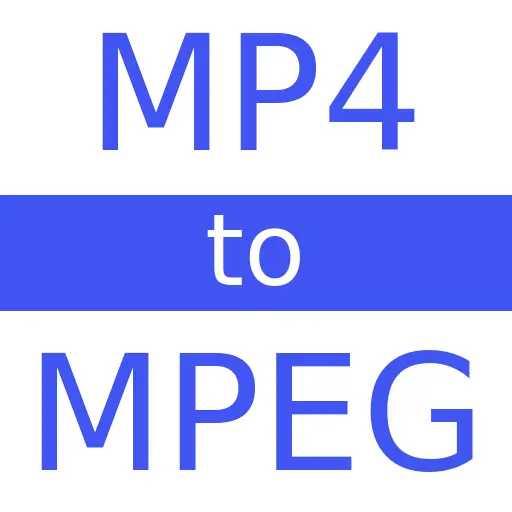MP4 to MPEG
Convert MP4 to MPEG (Fast & Free)
MP4 to MPEG Converter Tool - Your Day to Day Companion for High Quality Conversions
Hi there, and welcome to ProConvert! On this page you can easily change MP4 to MPEG with the help of our free, fast and secured online converter. MP4 to MPEG Converter Tool can be used with no limits or hidden charges. Don't forget, you can use the forum section below if you have any question for us or, leave us a rating in the ratings section so others can see what performant tools we have in place for free.
(or click to select files)
F.A.Q. / Frequently Asked Questions about MP4 to MPEG
Curious about how our platform works? ProConvert team got all your questions together and created the following Frequently Asked Questions section. Here you can find useful information about us. Don't see your question here ? Leave a question or a comment in the forum section and our team will help you as soon as possible.
File conversions were never that easy before. But good for you! ProConvert is here and gives you support and full access to convert or change MP4 to MPEG any time, with no limits or charges. Everything is free, created for your needs.
- Select MP4 files you want to convert, from your computer or drag and drop it on the page.
- Press the "Convert" button in order to convert MP4 to MPEG.
- When the conversion is completed, click "Download" on the desired converted MPEG file.
Useful information about MP4
| Extension: | MP4 |
|---|---|
| Name: | MPEG-4 Part |
| Mime Type: | video/mp4 |
| Converter: | MP4 Converter |
| Description: | MPEG-4 Part 14 or MP4 is a digital multimedia container format most commonly used to store video and audio, but it can also be used to store other data such as subtitles and still images. Like most modern container formats, it allows streaming over the Internet. The only filename extension for MPEG-4 Part 14 files as defined by the specification is .mp4. MPEG-4 Part 14 (formally ISO/IEC 14496-14:2003) is a standard specified as a part of MPEG-4. - Source |

Useful information about MPEG
| Extension: | MPEG |
|---|---|
| Name: | Moving Picture Experts Group |
| Mime Type: | video/mpeg |
| Converter: | MPEG Converter |
| Description: | The Moving Picture Experts Group (MPEG) is an alliance of working groups established jointly by ISO and IEC that sets standards for media coding, including compression coding of audio, video, graphics, and genomic data; and transmission and file formats for various applications.[1] Together with JPEG, MPEG is organized under ISO/IEC JTC 1/SC 29 – Coding of audio, picture, multimedia and hypermedia information (ISO/IEC Joint Technical Committee 1, Subcommittee 29). MPEG formats are used in various multimedia systems. The most well known older MPEG media formats typically use MPEG-1, MPEG-2, and MPEG-4 AVC media coding and MPEG-2 systems transport streams and program streams. Newer systems typically use the MPEG base media file format and dynamic streaming (a.k.a. MPEG-DASH). - Source |
In High Demand Converters / See What Others Convert
As you might know already, we have over 2600 converter tools like MP4 to MPEG on our platform. All of them are free to use and provides high quality computing for your needs. However, these are the most used converters on ProConvert at the moment.
Forum / Questions and Answers / Everything about MP4 to MPEG
You got it right! Here you can ask anything about MP4 to MPEG Converter Tool or any other information regarding our services. You can of course recommend us what to create further or improve as a feedback. We are eager to answer all your questions.
* The question will appear on this page once answered by one of ProConvert Team members.
There are no comments posted at the moment.


